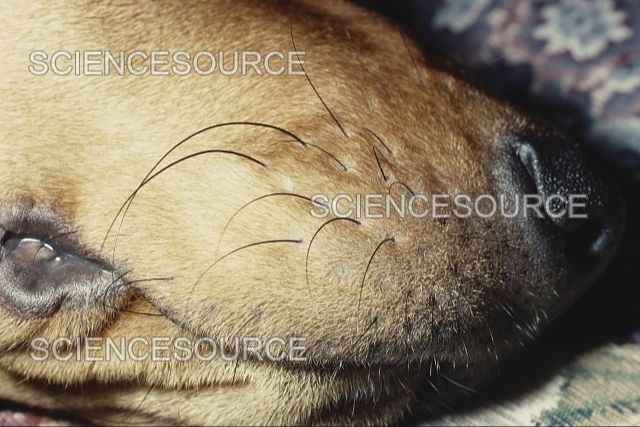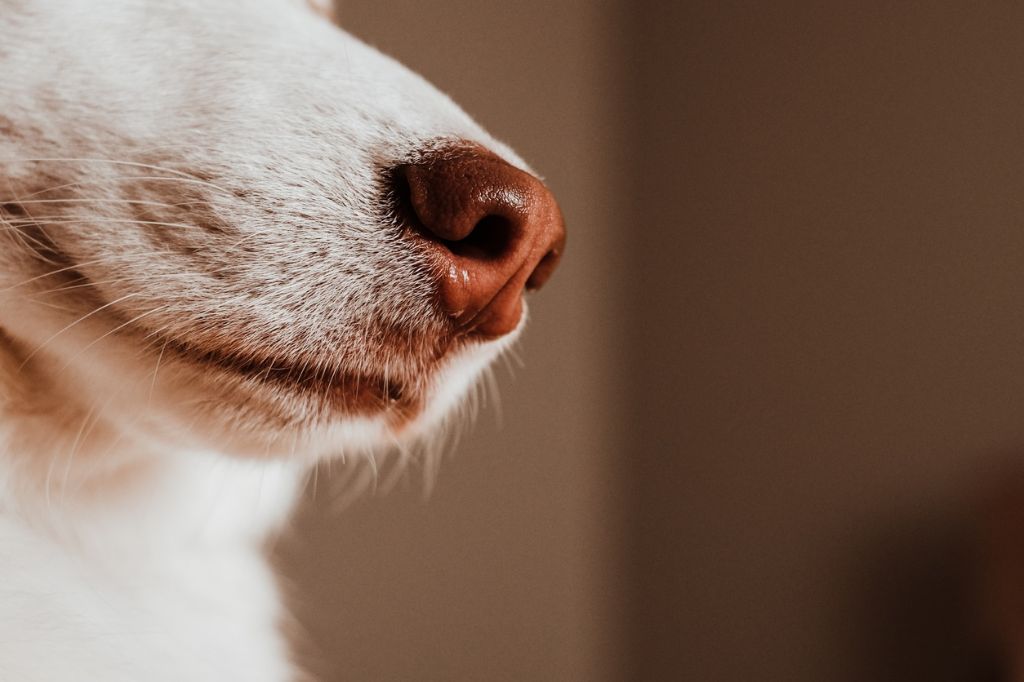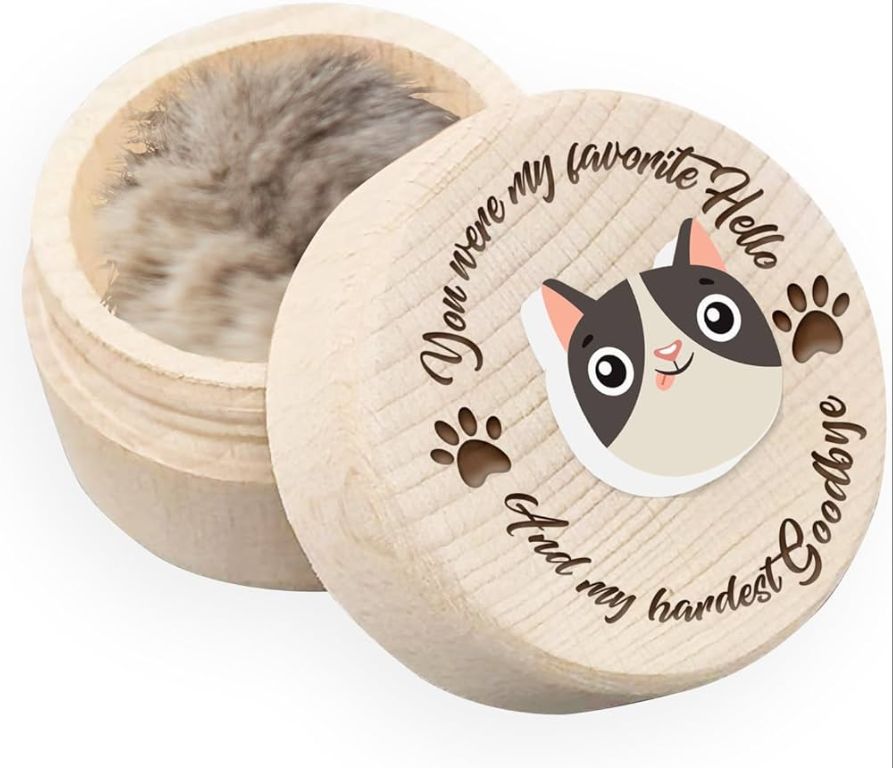Introduction
Dog whiskers, also known as vibrissae, are longer and thicker hairs that grow around a dog’s face, primarily above the eyes, on the muzzle, and under the jaw. They serve important sensory purposes for dogs.
Whiskers contain many more sensory nerve endings than regular dog hairs. They act as tactile sensors that detect subtle changes in air currents, allowing dogs to sense the environment around them even when it is too dark to see. The whiskers pick up information about the size, shape, and speed of nearby objects, helping dogs navigate obstacles and judge distances in close quarters.
Some people believe that finding a detached dog whisker brings luck or has spiritual meaning. Dog owners may be searching for more information about the significance of finding whiskers that their dog has shed around the home.
Superstitions and Folklore
There are many superstitions and folklore beliefs associated with finding dog whiskers that bring good luck. According to Hachiko, some people believe that carrying a dog whisker brings protection against bad luck or evil spirits. There is a longstanding superstition in many cultures that keeping a dog whisker in your wallet or purse can help attract money and prosperity.
Some believe that finding a fallen whisker signals upcoming positive events or luck coming your way. There is also a superstition that if a whisker falls out while you pet your dog, your wish will come true. Many people view detached whiskers as lucky charms and will keep them in a safe place or carry them as good luck talismans. Some even use dog whiskers in handicrafts or jewelry to serve as protective amulets.
Overall, while there is no scientific evidence behind these superstitions, the presence of widespread folklore beliefs shows the mysticism and symbolism people often associate with dog whiskers and finding them unexpectedly. The superstitions provide insight into the meaning people culturally ascribe to whiskers as tokens of good fortune.
Spiritual Symbolism
Dog whiskers hold symbolic meaning in some spiritual and folk traditions. In hoodoo and witchcraft practices, dog whiskers are sometimes used as ingredients in spells or rituals. Some believe that the whiskers help enhance psychic abilities, provide protection, or reveal hidden information. The whiskers are thought to carry the energetic imprint or “essence” of the dog, so they can be utilized to connect with canine energies.
According to some Native American traditions, finding a detached dog whisker signals a spiritual blessing or gift from the dog spirit. The whisker is seen as a physical representation of the dog’s protective energy. In Mexican folk magic, the Virgin of Guadalupe is sometimes depicted holding black dog whiskers as a spiritual tool. The whiskers signify her ability to navigate and illuminate the darkness.
Across many cultures, dogs are symbols of loyalty and protection. Possessing part of a dog, like a whisker, is thought to confer some of those qualities by association. The whisker’s ability to sense subtle vibrations and ‘sniff out’ hidden truths also lends to the mystical symbolism. Overall, dog whiskers can hold sacred meaning and spiritual potency in traditions that venerate the dog as a helper spirit.
Whisker Structure and Growth
Dog whiskers, known scientifically as vibrissae, have a unique anatomical structure that allows them to sense subtle changes in the environment and transmit that information to the dog (Source). The whiskers are embedded more deeply in the dog’s skin than regular hairs, with root systems that extend into tissues and nerves that transmit sensory information to the brain (Source).

Whiskers grow from follicles located in the dog’s muzzle, above the lips and eyes. The follicle at the base of each whisker is surrounded by a network of nerves and blood vessels. Even the slightest vibration or touch to a whisker sends signals to the brain that provide sensory information about the dog’s surroundings and navigational guidance (Source).
Whiskers typically grow to a set length, determined by the dog’s genetics, and then shed and regrow on a cycle. The growth phase lasts for about 60 days, after which the whisker remains at full length for 1-2 months before shedding. Shed whiskers can often be found around the house. Most dogs have full sets of whiskers re-grown within 1-2 months after shedding (Source).
Why Dogs Lose Whiskers
Dogs lose their whiskers for a variety of reasons throughout their lives. One of the most common reasons is due to rubbing against objects. Dogs tend to rub their faces on carpets, furniture, and the ground which can cause whiskers to get pulled out or broken off. This is especially common in breeds with long whiskers. Accidents and injuries can also lead to whisker loss if the whiskers get caught on something sharp or are hit forcefully.
Another major reason dogs lose whiskers is due to the natural aging process. As dogs get older, their whisker follicles weaken over time. This causes the whiskers to gradually fall out more easily. Older dogs will often have sparse whiskers compared to when they were puppies and younger adults. The whisker loss is gradual and spreads out over time, unlike sudden whisker loss which can signal an underlying issue.
While whisker loss from causes like rubbing and aging is normal, excessive or sudden whisker loss could indicate a health problem. Consult a veterinarian if you notice significant whisker loss over a short period of time, loss of whiskers on just one side, or loss of whiskers accompanied by other symptoms like hair loss or skin irritation. But for the most part, moderate whisker shedding is a normal part of a dog’s life.
Finding Detached Whiskers
It’s common for dogs to shed their whiskers naturally as part of the regular hair growth cycle. Just like hair, whiskers will detach and fall out on their own over time. You may notice small whiskers around your home that have shedded from your dog.

Check areas where your dog spends a lot of time resting and sleeping, such as their bed, couch, carpet, or floor. Since whiskers naturally detach while dogs are relaxed and sleeping, these are the most likely spots to find shedded whiskers. Grooming areas and anywhere your dog shakes out their fur are other prime locations.
Slightly larger whiskers may get caught in furniture, rugs, blankets, or even your clothing after falling out. Carefully lifting cushions or shaking out blankets and clothes can reveal lost whiskers. Hard floors like wood or tile make spotting shed whiskers easy.
While healthy dogs can shed multiple whiskers per week, finding more than just a few likely signals excess shedding. If your dog rapidly loses numerous whiskers across their entire muzzle, consult your veterinarian to check for underlying issues.
Keeping Lost Whiskers
Many dog owners like to preserve their dog’s lost whiskers as keepsakes. There are several creative ways to save whiskers when you find them around the house or on your dog’s bed or toys:
Keep whiskers in a decorative jar or bottle. Small jars like baby food jars or ornamental glass bottles work well. You can decorate the jar with ribbon, stickers, glitter, etc. Some people like to put the dog’s name and date on the jar. This makes a nice keepsake to display in your home.
Make whisker jewelry. You can put single whiskers or small bunches into glass lockets or vials and wear them as necklaces or bracelets. Some crafty dog owners insert whiskers into resin jewelry for lasting preservation.

Keep whiskers in your wallet or a small pouch. For easy portability, you can carry a few in a tiny zipper bag, like a contact lens case. That way your dog’s whiskers can be with you wherever you go.
Frame special whiskers. Find an attractive small frame, shadowbox, or display case to showcase your dog’s most precious whiskers.
Overall, with a little creativity you can honor your special bond with your dog by saving whiskers to forever remember your furry friend.
Whisker Trimming
Trimming or cutting a dog’s whiskers is generally not recommended as whiskers serve important purposes for dogs. Whiskers contain many nerve endings that help dogs sense their surroundings and spatial awareness. Trimming whiskers could impact a dog’s ability to navigate safely and judge distances properly.
According to Purina, “It doesn’t hurt dogs to cut the whiskers as the hairs don’t contain any pain receptors, cutting them off could create confusion or make your dog less spatially aware.”
Canidae also cautions against trimming dog whiskers: “You can use hair clippers or scissors to remove whiskers, but the whiskers should never be plucked, as that process can be very painful.”
Overall, while trimming won’t necessarily hurt a dog, it’s best to avoid cutting whiskers as they play key sensory roles. Only trim if absolutely necessary for medical reasons or serious matting.
When to Worry
In rare cases, abnormal or excessive whisker loss in dogs can indicate an underlying illness that requires veterinary care. According to Dogtime, diseases like hypothyroidism, Cushing’s disease, and autoimmune disorders can sometimes lead to whisker loss. Severe whisker loss on just one side of the face may also indicate an issue with the corresponding side of the body, like nerve damage or muscle atrophy.
You should consult your veterinarian if your dog is rapidly losing whiskers on just one side or overall whisker loss seems excessive. The WebMD article advises to seek veterinary care if “whisker loss occurs suddenly or whiskers fall out in clumps.” Your vet can run tests to check for underlying illness and provide proper treatment if an ailment is discovered.

While some whisker loss is normal, abnormal or asymmetric whisker loss may be a red flag for disease. Contact your veterinarian promptly if your dog exhibits signs of excessive whisker shedding to address any potential medical issues.
Conclusion
In summary, finding a dog whisker can have interesting symbolic meanings in various cultural beliefs and superstitions. Whiskers play an important functional role for dogs, helping guide them and sense their surroundings. As dogs naturally shed old whiskers, finding a detached whisker is common and nothing to worry about. While some view finding a whisker as good fortune, ultimately a dog whisker is simply a common natural occurrence.
The meaning we ascribe to finding a whisker often reveals our own personal hopes and desires. A person hoping for connection or good luck is more likely to view it as a positive omen. Someone worried about change or misfortune may have the opposite interpretation. The whisker itself is neutral; the meaning comes from within us.
If you find a dog whisker, consider it a reminder to appreciate the small wonders in life. Let it be an opportunity to ponder symbolic meanings while appreciating the beauty in everyday objects and occurrences. Look at it mindfully before letting it go back to the earth, and let any meaning emerge naturally from your own heart.